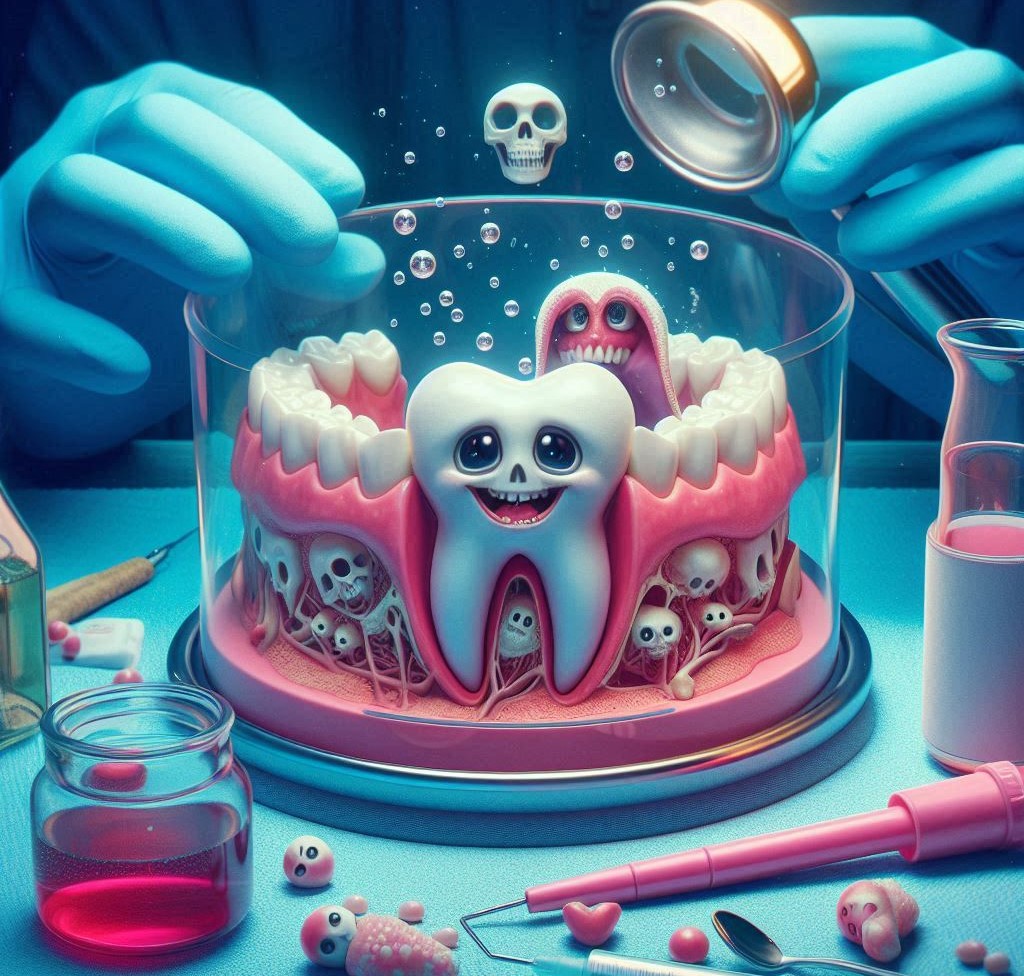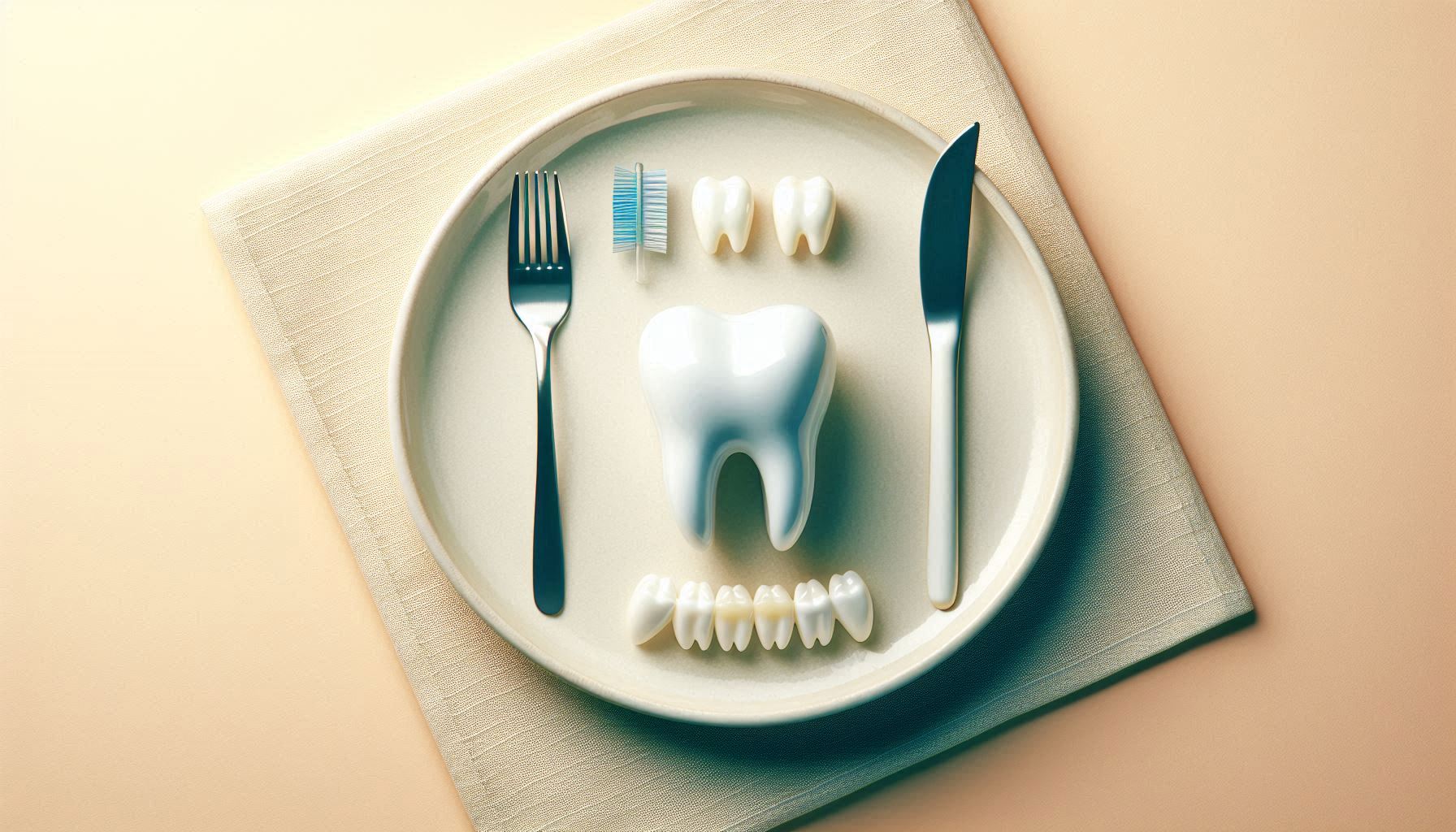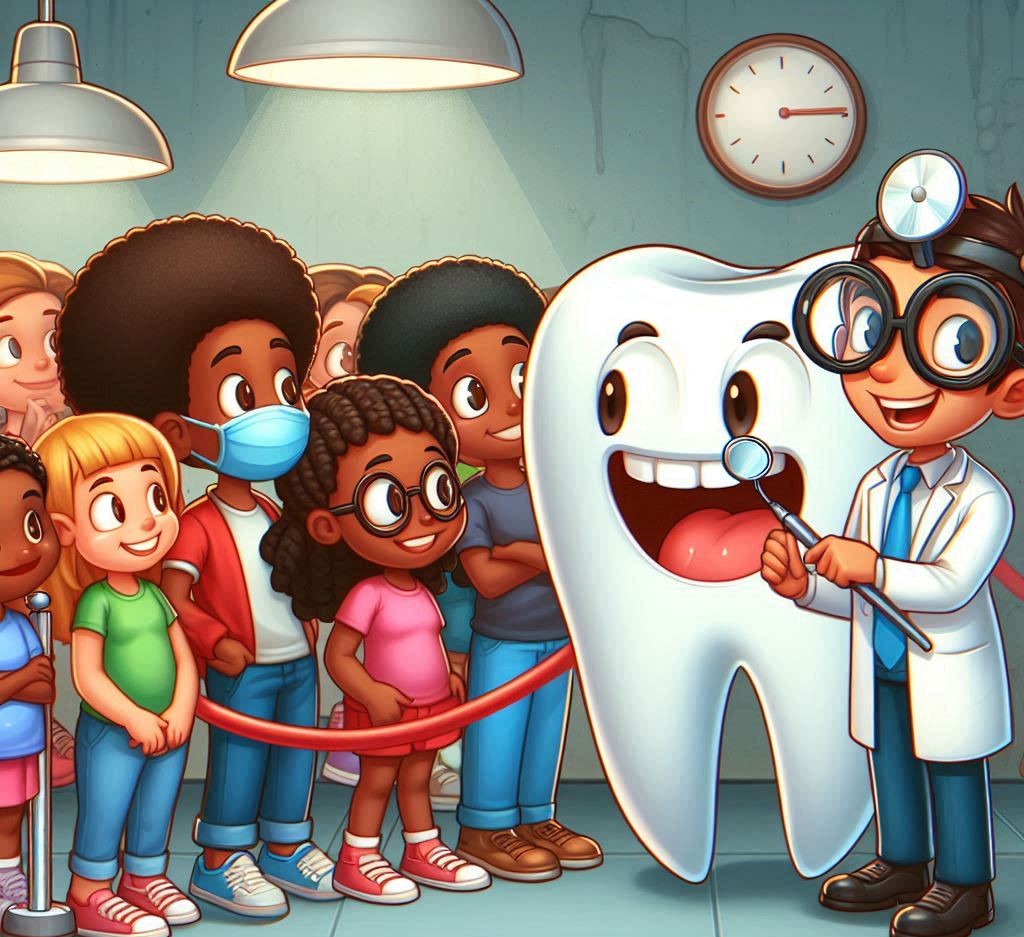When we think of dental issues, we often imagine cavities, gum disease, or the occasional tooth extraction. However, one of the more complex dental concerns that can arise is the presence of extra teeth (supernumerary teeth) or abnormal bone growths in the mouth (exostosis). These conditions, though not as commonly discussed as cavities or gum issues, can pose a series of challenges that go beyond cosmetic concerns. From misalignment and crowding to infections, pain, and dysfunction, extra teeth and bone growths have the potential to cause significant oral health problems if left untreated.
Despite their potential risks, supernumerary teeth and bone growths are often overlooked, as they might not cause immediate symptoms. This can lead individuals to delay or avoid necessary treatments, allowing the issues to escalate over time. The goal of this article is to bring these dental anomalies into the spotlight, shedding light on their causes, symptoms, risks, and the various treatment options available. Whether you have noticed unusual growths in your mouth or simply want to learn more about these often-overlooked conditions, this article will provide comprehensive insights into why extra teeth and bone growths should never be dismissed as insignificant.
Understanding Extra Teeth and Bone Growths in the Mouth
Supernumerary Teeth (Extra Teeth)
Supernumerary teeth, also known as extra teeth, are teeth that develop in addition to the normal set of teeth. These teeth are often an unexpected occurrence, leading to complications with alignment, eruption, and overall dental health. Supernumerary teeth are classified based on their location, shape, and time of eruption.
- Types of Supernumerary Teeth:
- Mesiodens: The most common type of supernumerary tooth, typically found between the upper two central incisors. Mesiodens is most often conical in shape and may be positioned either above the gum line or buried within the jawbone.
- Paramolar: A supernumerary tooth that develops near the molars, often causing malocclusion or crowding in the back of the mouth.
- Distomolar: Located behind the third molars, distomolars are typically found in the upper or lower jaw and can interfere with the eruption of wisdom teeth.
- Causes of Supernumerary Teeth:
- Genetic Factors: A family history of supernumerary teeth can increase the likelihood of developing these extra teeth. Certain genetic syndromes, such as Gardner’s syndrome and cleidocranial dysostosis, are strongly associated with supernumerary teeth.
- Environmental Factors: External factors, such as trauma to the mouth during tooth development or the use of certain medications, can trigger the formation of extra teeth.
- Disruption of Normal Tooth Development: Any abnormality in the genetic coding or disruption in the timing of tooth formation can result in the development of additional teeth.
Exostosis (Bone Growths)
Exostosis refers to the formation of bony protrusions within the mouth, often occurring along the jawbones or the palate. These growths, though benign, can cause significant discomfort and affect normal oral function.
- Types of Exostosis:
- Mandibular Torus: A bony growth that develops along the inside of the lower jaw. Mandibular tori can range in size from small bumps to large masses that interfere with chewing and speaking.
- Palatal Exostosis: A bony growth that develops on the roof of the mouth, typically along the hard palate. These can range from small, painless lumps to large, noticeable bumps that may cause discomfort or difficulty swallowing.
- Buccal Exostosis: Bony growths that occur on the outer surface of the jaw, typically along the upper or lower jaw near the molars.
- Causes of Exostosis:
- Genetic Predisposition: Like supernumerary teeth, the tendency to develop exostosis may run in families.
- Chronic Irritation: Long-term pressure from teeth grinding, denture wear, or orthodontic appliances can cause the bone tissue to respond with abnormal growth.
- Trauma: Injury or trauma to the jaw, such as a fracture, can trigger the formation of exostosis as the body attempts to heal.
Symptoms and Early Detection
Recognizing Supernumerary Teeth
Supernumerary teeth are often asymptomatic, meaning that many individuals may not notice them until they are discovered during a routine dental examination or X-ray. However, there are several key symptoms and signs to look for:
- Delayed Eruption of Teeth: Extra teeth may prevent the normal eruption of adjacent teeth, leading to a delay in the appearance of permanent teeth.
- Visible Misalignment: Extra teeth can cause noticeable crowding or misalignment, leading to bite problems (malocclusion).
- Localized Pain: Impacted or partially erupted supernumerary teeth can cause localized pain, swelling, or discomfort in the gums.
- Abscess Formation: If extra teeth are impacted or cannot erupt properly, they may lead to infections, resulting in abscess formation around the affected tooth.
Early detection of supernumerary teeth is typically achieved through routine dental X-rays. This is one of the reasons why regular checkups with a dentist are essential, as early intervention can prevent the need for more invasive procedures later on.
Recognizing Bone Growths (Exostosis)
Exostosis often goes unnoticed until it becomes large enough to cause symptoms. However, there are a few signs to watch for:
- Bony Lumps in the Mouth: The most obvious symptom of exostosis is the presence of hard, bony lumps along the gums, roof of the mouth, or jawbone.
- Pain or Sensitivity: If the bony growths press against soft tissues in the mouth, they may cause pain, swelling, or sensitivity, particularly when chewing or speaking.
- Difficulty in Oral Function: Large exostoses can interfere with normal oral functions, such as eating, speaking, or swallowing. They can also create difficulty in maintaining proper oral hygiene.
- Infection: If exostosis becomes irritated or injured, it can lead to an infection in the surrounding tissues, requiring prompt treatment to avoid further complications.
If you notice any abnormal growths or discomfort in your mouth, it’s important to visit your dentist immediately for an assessment. Early detection can help avoid complications, including infection or functional impairment.
The Potential Risks of Extra Teeth
While extra teeth may not initially cause pain or discomfort, they can lead to serious oral health complications if left untreated. These risks can range from functional impairments to aesthetic concerns and chronic oral infections.
Disruption of Normal Tooth Development
Extra teeth can disrupt the normal development of the permanent teeth. For example, mesiodens can block the eruption of adjacent incisors, causing them to emerge at odd angles or fail to emerge entirely. This disruption can lead to:
- Tooth Spacing Issues: Extra teeth may prevent the alignment of adjacent teeth, resulting in abnormal spacing, misalignment, or overcrowding.
- Delayed Eruption: Supernumerary teeth can prevent the eruption of permanent teeth, leaving gaps or causing misalignment.
- Cyst Formation: Impacted supernumerary teeth can lead to the formation of cysts or abscesses, which require surgical intervention.
Crowding and Malocclusion
As extra teeth push against adjacent teeth, they can cause overcrowding in the mouth. Overcrowding can lead to:
- Crooked Teeth: Misaligned teeth can negatively affect a person’s appearance, leading to aesthetic concerns.
- Bite Problems: Malocclusion, or improper alignment of the upper and lower teeth, can lead to difficulty chewing, speaking, and maintaining proper oral hygiene.
- Increased Risk of Tooth Decay and Gum Disease: Overcrowded teeth are harder to clean, which increases the risk of plaque buildup, cavities, and gum disease.
Infections and Abscesses
When extra teeth become impacted or partially erupted, they can trap food particles and bacteria, leading to:
- Infection: Bacterial growth in the areas around supernumerary teeth can lead to gum infections, which can spread to surrounding tissues.
- Abscesses: In severe cases, infection can lead to abscesses or cysts, requiring surgical removal.
The Dangers of Bone Growths in the Mouth
Exostosis may not cause immediate pain, but over time, it can lead to a range of complications. Depending on the size, location, and severity of the bone growths, these can interfere with the normal function of the mouth.
Discomfort and Pain
Bony growths in the mouth can cause discomfort when they come into contact with the teeth, gums, or soft tissues. For example, mandibular tori (growths on the lower jaw) can irritate the tongue, while palatal exostosis can make it difficult to speak or swallow. Over time, this can lead to:
- Chronic Pain: Persistent discomfort in the affected area can interfere with daily activities.
- Sensitivity: Bone growths may lead to increased sensitivity, particularly if they press on nerves or nearby tissues.
Impaired Oral Function
Exostosis can also affect the ability to chew, speak, or swallow. When large bone growths obstruct the normal movement of the jaw, individuals may experience:
- Difficulty Chewing: Large exostoses in the mouth can make it difficult to properly chew food, potentially leading to digestion problems.
- Speech Impairment: Palatal exostosis can affect pronunciation, leading to difficulty speaking clearly.
- Swallowing Issues: In some cases, the bony growth can affect the swallowing reflex, potentially leading to choking or discomfort while eating.
Diagnosis and Treatment Options
How Dentists Diagnose These Conditions
Both supernumerary teeth and exostosis can be challenging to diagnose purely through visual inspection, as many cases are asymptomatic in the early stages. Diagnosis typically requires a combination of clinical evaluation and advanced imaging techniques.
- Supernumerary Teeth Diagnosis:
- X-Rays: The primary diagnostic tool for detecting supernumerary teeth is radiographic imaging. Dental X-rays, such as periapical, panoramic, or cone beam CT scans, can provide a detailed view of the teeth’s alignment and reveal any extra teeth present beneath the gum line. Panoramic X-rays are particularly effective for detecting supernumerary teeth in the jaw.
- Clinical Exam: During a routine dental exam, the dentist will assess the patient’s oral cavity for any signs of discomfort, misalignment, or delayed eruption of teeth. If supernumerary teeth are suspected, an X-ray is usually ordered to confirm the diagnosis.
- Exostosis Diagnosis:
- Clinical Examination: In many cases, exostosis is diagnosed through a routine visual examination. The dentist may identify bony lumps or irregularities on the jaw, palate, or gums. In the case of larger exostoses, the dentist may be able to feel the bony growth during a manual examination of the oral cavity.
- Imaging Techniques: To fully assess the extent of the bone growth, an X-ray (intraoral or panoramic) or a CT scan may be used. A CT scan provides a more detailed image of the bone structure, allowing the dentist to determine the size, location, and impact of the exostosis.
Treatment for Supernumerary Teeth
The treatment for supernumerary teeth is highly dependent on the specific case, including the location, size, and symptoms associated with the extra teeth.
- Surgical Removal:
- Indications: Surgical intervention is typically required when the supernumerary teeth are causing problems, such as impaction, delayed eruption of permanent teeth, misalignment, or infection.
- Procedure: The surgical removal of supernumerary teeth is usually performed under local anesthesia, although in some cases, general anesthesia may be required. The dentist or oral surgeon will make an incision in the gum tissue to access the tooth, which is then carefully removed.
- Post-Operative Care: After the surgery, patients are typically advised to rest and follow post-operative care instructions to promote healing and reduce the risk of infection. Ice packs, pain medications, and a soft food diet are often recommended.
- Orthodontic Treatment:
- After the removal of extra teeth, orthodontic treatments like braces or clear aligners may be necessary to align the remaining teeth. Orthodontics can help correct bite issues and ensure that the teeth erupt properly, reducing the risk of future misalignment or overcrowding.
- Timing: Orthodontic treatment is generally recommended after the supernumerary teeth are removed and the gums have healed sufficiently.
- Monitoring Asymptomatic Supernumerary Teeth:
- In some cases, supernumerary teeth may not cause any problems or discomfort. If they are not causing issues with tooth eruption, crowding, or infection, the dentist may recommend simply monitoring the condition through regular checkups and X-rays.
Treatment for Exostosis
The treatment for exostosis depends on the size, location, and symptoms associated with the bone growth.
- Conservative Management:
- In many cases, exostosis is asymptomatic and may not require immediate treatment. If the growths are small and not causing significant discomfort, the dentist may recommend simply monitoring the condition over time.
- Preventing Irritation: If exostosis is caused by irritation from dentures or orthodontic appliances, the dentist may suggest adjustments to these devices to reduce pressure on the affected area.
- Surgical Removal:
- Indications: If the bony growths are causing pain, discomfort, difficulty chewing, or interfering with normal speech or swallowing, surgical removal may be necessary.
- Procedure: The procedure for removing exostosis generally involves an incision in the gum tissue to access the bone growth. Depending on the location, it may be performed under local or general anesthesia.
- Recovery: Following surgery, patients are advised to follow a soft-food diet and avoid irritating the affected area. Pain relief and antibiotics may be prescribed to manage post-surgical discomfort and prevent infection.
- Possible Complications of Surgery:
- While exostosis surgery is generally safe, there are potential risks, including infection, excessive bleeding, nerve damage, and recurrence of the bone growth. Proper aftercare and follow-up appointments with the dentist are crucial to ensure a smooth recovery.
Impact on Overall Health
Oral Health Complications from Extra Teeth
Extra teeth and bone growths may appear isolated to the mouth, but they can have a significant impact on overall oral health. These issues can lead to a cascade of problems, including:
- Tooth Decay:
- Misaligned or overcrowded teeth are harder to clean effectively, increasing the risk of plaque buildup. Plaque harbors bacteria that can cause cavities, tooth decay, and gum disease.
- Gum Disease:
- Supernumerary teeth and bone growths can create pockets between teeth that trap food and bacteria, leading to gum inflammation and infection. If untreated, gum disease can lead to periodontitis, tooth mobility, and even tooth loss.
- Jaw Pain and TMJ Disorders:
- Extra teeth, especially if they are impacting or crowding adjacent teeth, can affect bite alignment and cause undue stress on the temporomandibular joint (TMJ). This can lead to jaw pain, headaches, and even conditions like bruxism (teeth grinding).
- Increased Risk of Infection:
- Impacted or partially erupted supernumerary teeth can create pockets where bacteria can thrive, leading to infections or abscesses. Additionally, exostosis that is irritated can become infected, causing further oral health complications.
Systemic Health Implications
There is increasing evidence linking oral health to overall health. Chronic dental issues, like infections from supernumerary teeth or exostosis, can contribute to the development of serious systemic conditions, including:
- Cardiovascular Disease:
- The bacteria from gum disease can enter the bloodstream, leading to an increased risk of cardiovascular issues, such as heart disease and stroke.
- Diabetes:
- Poor oral health has been shown to affect the management of diabetes. Gum disease can make it harder to control blood sugar levels, and infections in the mouth can worsen diabetic symptoms.
- Respiratory Problems:
- Bacteria from untreated dental infections can be inhaled into the lungs, potentially leading to respiratory infections, pneumonia, and other serious lung conditions.
Preventive Measures and Early Intervention
Importance of Regular Dental Checkups
Regular dental checkups are essential for the early detection and management of dental anomalies, including supernumerary teeth and exostosis. Routine visits allow dentists to:
- Identify Issues Early:
- During regular checkups, the dentist will assess the development of teeth, identify signs of overcrowding or misalignment, and detect any unusual growths in the mouth.
- Prevent Complications:
- Early intervention can prevent issues like tooth decay, gum disease, and misalignment, ultimately saving the patient from more complex treatments or surgeries in the future.
- Monitor Existing Conditions:
- If supernumerary teeth or bone growths are present, regular visits allow the dentist to monitor the condition and determine if any intervention is needed.
Good Oral Hygiene Practices
Proper oral hygiene is essential to prevent complications associated with supernumerary teeth and exostosis. Patients should:
- Brush and Floss Regularly:
- Brushing at least twice a day and flossing daily helps prevent plaque buildup, tooth decay, and gum disease.
- Use Antiseptic Mouthwash:
- Mouthwash can help reduce bacteria in the mouth, especially in areas that may be difficult to clean due to overcrowding or the presence of extra teeth.
- Maintain a Healthy Diet:
- A diet rich in vitamins, minerals, and fiber can promote healthy teeth and gums. Avoid sugary foods and beverages that can contribute to plaque buildup.
- Quit Smoking:
- Smoking increases the risk of gum disease and oral infections. Quitting smoking can improve overall oral health.
Living with Extra Teeth and Bone Growths
Psychological and Emotional Impact
Living with supernumerary teeth or exostosis can affect a person’s self-esteem and quality of life. These conditions, especially if visible or causing discomfort, can lead to:
- Embarrassment and Self-Consciousness:
- People may feel self-conscious about the appearance of extra teeth or the presence of bony growths in their mouths, especially if these anomalies affect their smile or speech.
- Social Isolation:
- Individuals with noticeable dental issues may feel uncomfortable in social situations, leading to withdrawal or anxiety.
- Lowered Confidence:
- Aesthetic concerns about misalignment or unusual growths can diminish a person’s confidence in their appearance and communication.
Managing Long-Term Effects
For many people, early intervention can effectively manage the long-term effects of supernumerary teeth or exostosis. However, if left untreated, these conditions can lead to chronic issues. Long-term management includes:
- Ongoing Dental Care:
- After treatment, patients must continue regular checkups and follow the dentist’s recommendations for maintaining oral health.
- Psychological Support:
- Therapy or counseling may help those affected by the psychological impact of dental anomalies.
- Orthodontic Retention:
- After the removal of supernumerary teeth and corrective procedures, orthodontic retention devices (such as retainers) may be necessary to maintain the position of the remaining teeth.
The Future of Treatment
Technological Advancements
As dental technology continues to evolve, new methods for diagnosing and treating supernumerary teeth and exostosis are becoming available:
- 3D Imaging:
- 3D imaging allows for more accurate diagnosis and treatment planning for supernumerary teeth and exostosis. These advanced technologies provide detailed, high-resolution images that help dentists visualize the position and impact of extra teeth or bone growths.
- Laser Dentistry:
- Laser technology is being used to remove supernumerary teeth and exostosis with greater precision, minimizing damage to surrounding tissues and promoting faster healing.
- Minimally Invasive Techniques:
- Minimally invasive procedures are becoming more common, reducing recovery times and the risk of complications.
Genetic Research
Ongoing research into the genetics of dental anomalies may soon lead to better preventative strategies. Understanding the genetic causes of supernumerary teeth and exostosis can potentially allow for genetic screening or interventions to prevent these conditions from developing.
Conclusion
Extra teeth and bone growths in the mouth are more than just cosmetic issues—they can have significant implications for both oral health and overall well-being. From misalignment and infection to chronic pain and psychological impacts, the effects of these anomalies should never be underestimated.
Early detection, effective treatment, and good oral hygiene are crucial for minimizing the risks associated with supernumerary teeth and exostosis. With the advancements in dental technology, many patients can benefit from less invasive procedures and more precise treatments. Regular dental checkups and proactive care can help prevent the serious complications that may arise from these conditions, allowing individuals to maintain a healthy, functional smile for years to come.
By staying informed and seeking timely treatment, individuals can take control of their oral health and avoid the potentially harmful consequences of extra teeth and bone growths in the mouth.
SOURCES
American Dental Association. 2020. Dental anatomy and its impact on oral health. Chicago, IL: American Dental Association Publishing.
Harris, M. A. & Brown, J. L. 2019. A study on the genetic and environmental factors contributing to supernumerary teeth development. Journal of Oral Health Genetics, 34(2), 45-52.
Khan, A. S., Lopez, A. M., & Smith, T. D. 2018. The relationship between supernumerary teeth and craniofacial syndromes: A systematic review. Journal of Clinical Dentistry, 45(3), 210-216.
Lee, S. H. & Yoon, D. W. 2021. Exostosis of the jaw: Etiology, diagnosis, and treatment. Journal of Oral and Maxillofacial Surgery, 79(8), 1250-1260.
Morrison, C. P. & Parker, E. A. 2022. The impact of extra teeth on orthodontic treatment planning. Orthodontic Review, 27(5), 330-338.
Sharma, R. & Singh, P. K. 2019. Supernumerary teeth: A review of clinical presentation, etiology, and management strategies. International Journal of Dentistry and Oral Health, 6(4), 51-56.
Smith, B. M., Jones, A. R., & Williams, C. L. 2017. The role of genetic factors in the development of exostosis. Journal of Clinical Genetics in Dentistry, 41(1), 14-20.
Thomas, D. A., Gordon, H. L., & Clark, K. D. 2020. Surgical treatment of exostosis: Techniques and outcomes. Journal of Oral Surgery, 82(9), 950-957.
Vidal, J. L. & Romero, P. G. 2021. Managing the psychological impact of dental anomalies: A review of social and emotional consequences. Psychology and Health, 36(3), 287-299.
Williams, J. P. & Cameron, P. A. 2018. Systemic health implications of untreated oral infections: An overview. Oral and Systemic Health Journal, 10(2), 112-118.
Zhao, X. F., Lee, J. K., & Yang, D. C. 2019. The role of minimally invasive techniques in the treatment of supernumerary teeth. Journal of Advanced Dentistry, 22(6), 455-463.
HISTORY
Current Version
March 7, 2025
Written By:
SUMMIYAH MAHMOOD




